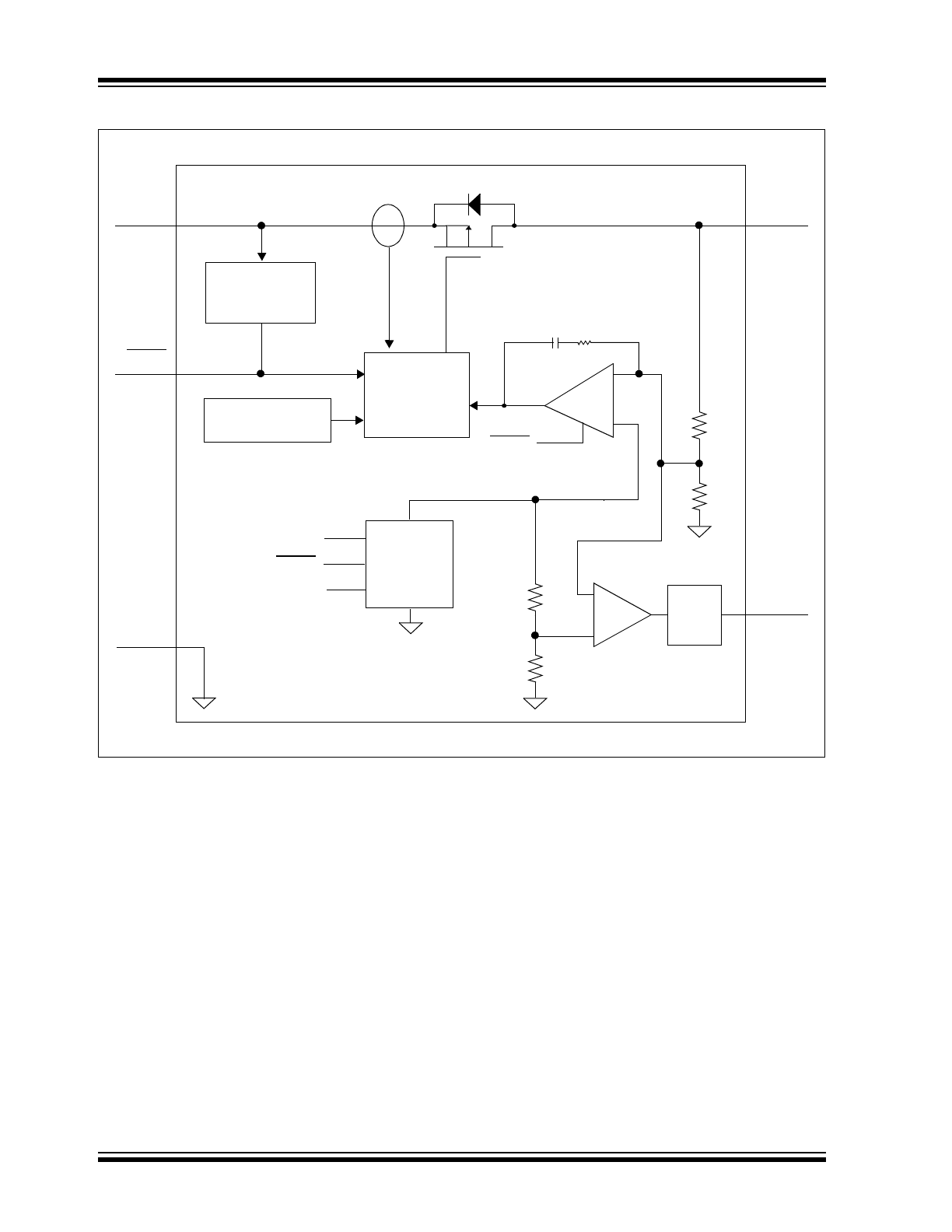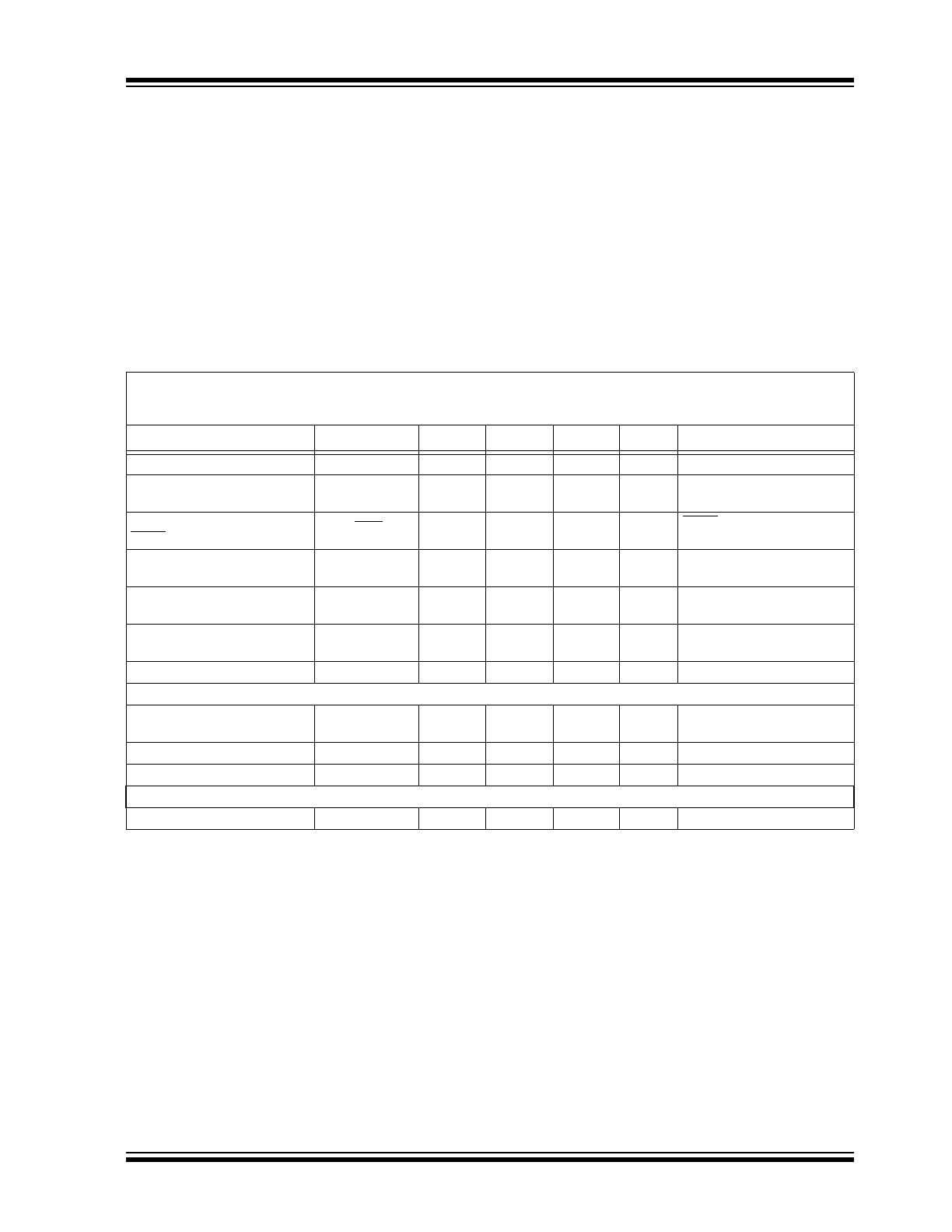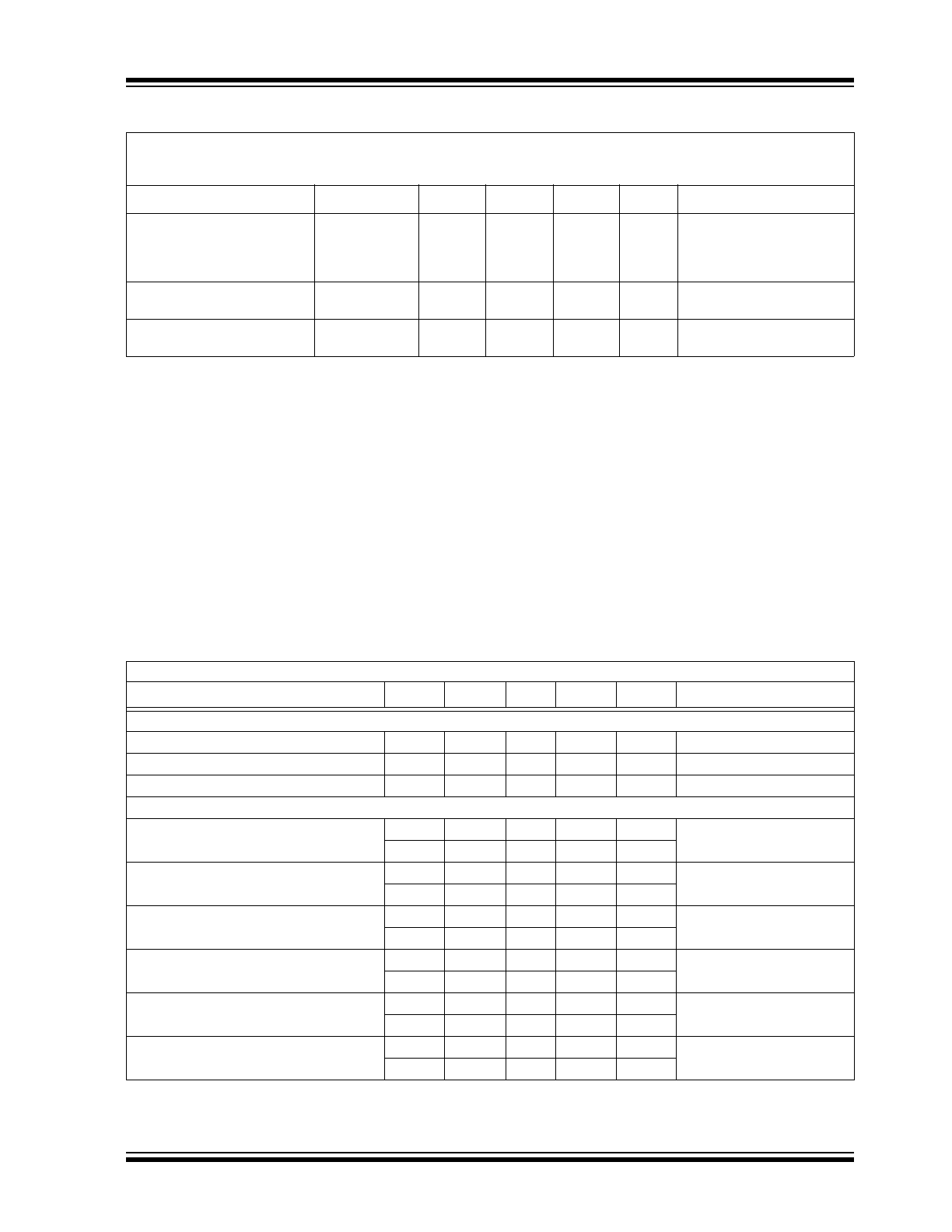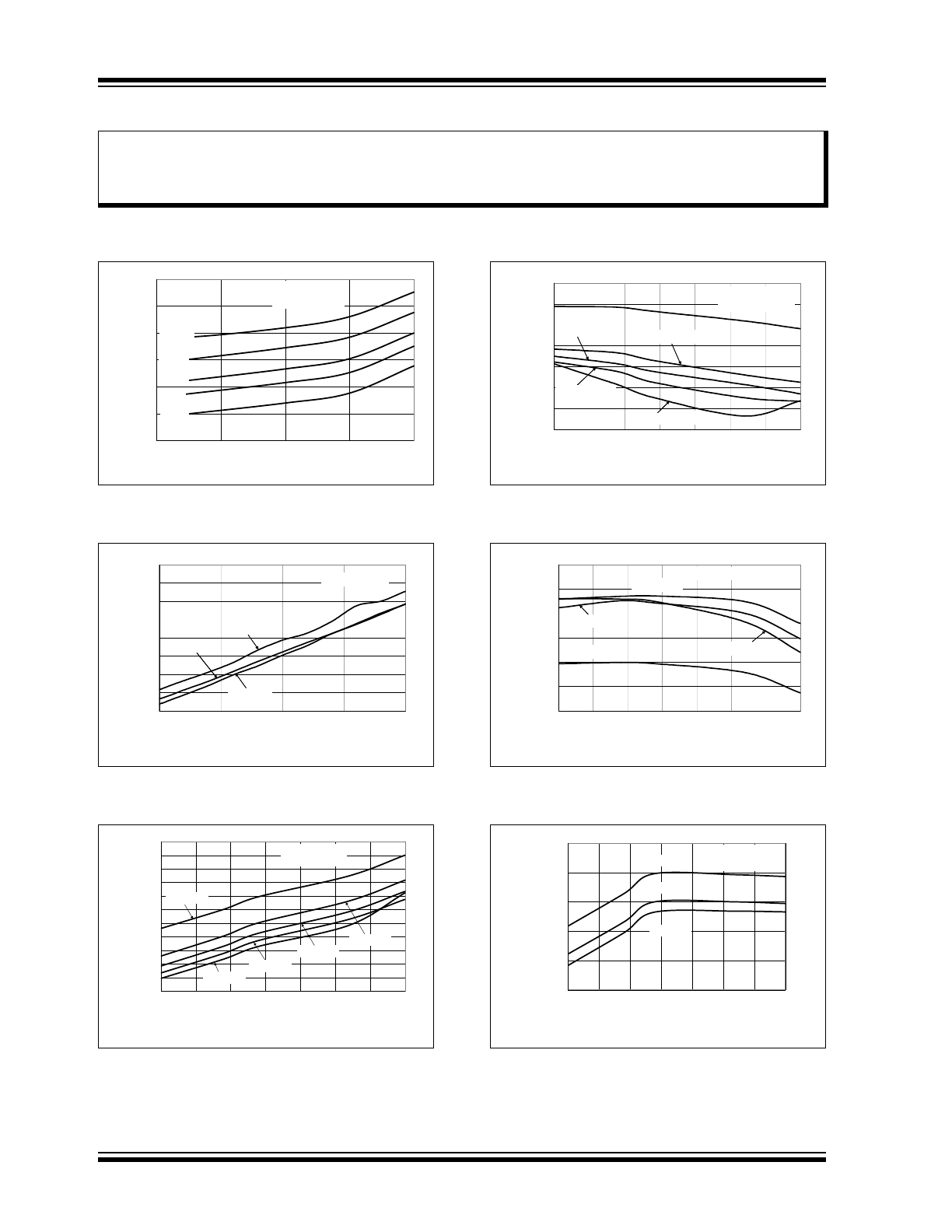
2007-2013 Microchip Technology Inc.
DS22057B-page 1
MCP1826/MCP1826S
Features:
• 1000 mA Output Current Capability
• Input Operating Voltage Range: 2.3V to 6.0V
• Adjustable Output Voltage Range: 0.8V to 5.0V
(MCP1826 only)
• Standard Fixed Output Voltages:
- 0.8V, 1.2V, 1.8V, 2.5V, 3.0V, 3.3V, 5.0V
• Other Fixed Output Voltage Options Available
Upon Request
• Low Dropout Voltage: 250 mV Typical at 1000 mA
• Typical Output Voltage Tolerance: 0.5%
• Stable with 1.0 µF Ceramic Output Capacitor
• Fast Response to Load Transients
• Low Supply Current: 120 µA (typ)
• Low Shutdown Supply Current: 0.1 µA (typ)
(MCP1826 only)
• Fixed Delay on Power Good Output
(MCP1826 only)
• Short Circuit Current Limiting and
Overtemperature Protection
• TO-263-5 (DDPAK-5), TO-220-5, SOT-223-5
Package Options (MCP1826).
• TO-263-3 (DDPAK-3), TO-220-3, SOT-223-3
Package Options (MCP1826S).
Applications:
• High-Speed Driver Chipset Power
• Networking Backplane Cards
• Notebook Computers
• Network Interface Cards
• Palmtop Computers
Description:
The MCP1826/MCP1826S is a 1000 mA Low Dropout
(LDO) linear regulator that provides high-current and
low-output voltages. The MCP1826 comes in a fixed or
adjustable output voltage version, with an output
voltage range of 0.8V to 5.0V. The 1000 mA output cur-
rent capability, combined with the low-output voltage
capability, make the MCP1826 a good choice for new
sub-1.8V output voltage LDO applications that have
high current demands. The MCP1826S is a 3-pin fixed
voltage version.
The MCP1826/MCP1826S is stable using ceramic
output capacitors that inherently provide lower output
noise and reduce the size and cost of the entire
regulator solution. Only 1 µF of output capacitance is
needed to stabilize the LDO.
Using CMOS construction, the quiescent current
consumed by the MCP1826/MCP1826S is typically
less than 120 µA over the entire input voltage range,
making it attractive for portable computing applications
that demand high-output current. The MCP1826
versions have a Shutdown (SHDN) pin. When shut
down, the quiescent current is reduced to less than
0.1 µA.
On the MCP1826 fixed output versions the scaled-
down output voltage is internally monitored and a
power good (PWRGD) output is provided when the
output is within 92% of regulation (typical). The
PWRGD delay is internally fixed at 200 µs (typical).
The overtemperature and short circuit current-limiting
provide additional protection for the LDO during system
Fault conditions.
1000 mA, Low-Voltage, Low Quiescent Current
LDO Regulator

MCP1826/MCP1826S
DS22057B-page 2
2007-2013 Microchip Technology Inc.
Package Types
MCP1826
1
2
3
4
5
6
SOT-223-5
Pin
Fixed
Adjustable
1
SHDN
SHDN
2
V
IN
V
IN
3
GND (TAB)
GND (TAB)
4
V
OUT
V
OUT
5
PWRGD
ADJ
6
GND (TAB)
GND (TAB)
1
2
3
SOT-223-3
4
MCP1826S
Pin
1
V
IN
2
GND (TAB)
3
V
OUT
4
GND (TAB)
Fixed/Adjustable
DDPAK-3
DDPAK-5
TO-220-3
TO-220-5
1 2 3 4 5
1 2 3 4 5
1 2 3
1
2
3

2007-2013 Microchip Technology Inc.
DS22057B-page 3
MCP1826/MCP1826S
Typical Application
MCP1826 Adjustable Output Voltage
MCP1826 Fixed Output Voltage
V
OUT
= 1.8V @ 1000 mA
V
IN
= 2.3V to 2.8V
On
Off
1 µF
100 k
4.7 µF
C
1
C
2
R
1
SHDN
V
IN
GND
V
OUT
PWRGD
20 k
R
2
V
OUT
= 1.2V @ 1000 mA
V
IN
= 2.3V to 2.8V
On
Off
1 µF
40 k
4.7 µF
C
1
C
2
R
1
SHDN
V
IN
GND
V
OUT
V
ADJ
1
1

MCP1826/MCP1826S
DS22057B-page 4
2007-2013 Microchip Technology Inc.
Functional Block Diagram – Adjustable Output
EA
+
–
V
OUT
PMOS
R
f
C
f
I
SNS
Overtemperature
V
REF
Comp
92% of V
REF
T
DELAY
V
IN
Driver w/limit
and SHDN
GND
Soft-Start
ADJ/SENSE
Undervoltage
Lockout
VIN
Reference
SHDN
SHDN
SHDN
Sensing
(UVLO)

2007-2013 Microchip Technology Inc.
DS22057B-page 5
MCP1826/MCP1826S
Functional Block Diagram – Fixed Output (3-Pin)
EA
+
–
V
OUT
PMOS
R
f
C
f
I
SNS
Overtemperature
V
REF
Comp
92% of V
REF
T
DELAY
V
IN
Driver w/limit
and SHDN
GND
Soft-Start
Sense
Undervoltage
Lockout
VIN
Reference
SHDN
SHDN
SHDN
Sensing
(UVLO)

MCP1826/MCP1826S
DS22057B-page 6
2007-2013 Microchip Technology Inc.
Functional Block Diagram – Fixed Output (5-Pin)
EA
+
–
V
OUT
PMOS
R
f
C
f
I
SNS
Overtemperature
V
REF
Comp
92% of V
REF
V
IN
Driver w/limit
and SHDN
GND
Soft-Start
Sense
Undervoltage
Lockout
VIN
Reference
SHDN
SHDN
SHDN
Sensing
(UVLO)
PWRGD
T
DELAY

2007-2013 Microchip Technology Inc.
DS22057B-page 7
MCP1826/MCP1826S
1.0
ELECTRICAL
CHARACTERISTICS
Absolute Maximum Ratings †
V
IN
....................................................................................6.5V
Maximum Voltage on Any Pin .. (GND – 0.3V) to (V
DD
+ 0.3)V
Maximum Power Dissipation......... Internally-Limited (
Note 6
)
Output Short Circuit Duration................................ Continuous
Storage temperature .....................................-65°C to +150°C
Maximum Junction Temperature, T
J
........................... +150°C
ESD protection on all pins (HBM/MM)
4 kV;
300V
† Notice: Stresses above those listed under “Maximum
Ratings” may cause permanent damage to the device. This is
a stress rating only and functional operation of the device at
those or any other conditions above those indicated in the
operational listings of this specification is not implied. Expo-
sure to maximum rating conditions for extended periods may
affect device reliability.
AC/DC CHARACTERISTICS
Electrical Specifications: Unless otherwise noted, V
IN
= V
OUT(MAX)
+ V
DROPOUT(MAX)
,
Note 1
, V
R
=1.8V for Adjustable Output,
I
OUT
= 1 mA, C
IN
= C
OUT
= 4.7 µF (X7R Ceramic), T
A
= +25°C.
Boldface type applies for junction temperatures, T
J
(
Note 7
) of -40°C to +125°C
Parameters
Sym.
Min.
Typ.
Max.
Units
Conditions
Input Operating Voltage
V
IN
2.3
6.0
V
Note 1
Input Quiescent Current
I
q
—
120
220
µA
I
L
= 0 mA, V
OUT
= 0.8V to
5.0V
Input Quiescent Current for
SHDN Mode
I
SHDN
—
0.1
3
µA
SHDN = GND
Maximum Output Current
I
OUT
1000
—
—
mA
V
IN
= 2.3V to 6.0V
V
R
= 0.8V to 5.0V,
Note 1
Line Regulation
V
OUT
/
(V
OUT
x
V
IN
)
—
±0.05
±0.20
%/V
(
Note 1
)
V
IN
6V
Load Regulation
V
OUT
/V
OUT
-1.0
±0.5
1.0
%
I
OUT
= 1 mA to 1000 mA,
(
Note 4
)
Output Short Circuit Current
I
OUT_SC
—
2.2
—
A
R
LOAD
< 0.1
, Peak Current
Adjust Pin Characteristics (Adjustable Output Only)
Adjust Pin Reference Voltage
V
ADJ
0.402
0.410
0.418
V
V
IN
= 2.3V to V
IN
= 6.0V,
I
OUT
= 1 mA
Adjust Pin Leakage Current
I
ADJ
-10
±0.01
+10
nA
V
IN
= 6.0V, V
ADJ
= 0V to 6V
Adjust Temperature Coefficient
TCV
OUT
—
40
—
ppm/°C
Note 3
Fixed-Output Characteristics (Fixed Output Only)
Voltage Regulation
V
OUT
V
R
- 2.5% V
R
±0.5% V
R
+ 2.5%
V
Note 2
Note 1:
The minimum V
IN
must meet two conditions: V
IN
2.3V and V
IN
V
OUT(MAX)
V
DROPOUT(MAX).
2:
V
R
is the nominal regulator output voltage for the fixed cases. V
R
= 1.2V, 1.8V, etc. V
R
is the desired set point output
voltage for the adjustable cases. V
R
= V
ADJ
*
((R
1
/R
2
)+1).
Figure 4-1
.
3:
TCV
OUT
= (V
OUT-HIGH
– V
OUT-LOW
) *10
6
/ (V
R
*
Temperature). V
OUT-HIGH
is the highest voltage measured over the
temperature range. V
OUT-LOW
is the lowest voltage measured over the temperature range.
4:
Load regulation is measured at a constant junction temperature using low duty-cycle pulse testing. Load regulation is
tested over a load range from 1 mA to the maximum specified output current.
5:
Dropout voltage is defined as the input-to-output voltage differential at which the output voltage drops 2% below its
nominal value that was measured with an input voltage of V
IN
= V
OUT(MAX)
+ V
DROPOUT(MAX)
.
6:
The maximum allowable power dissipation is a function of ambient temperature, the maximum allowable junction
temperature and the thermal resistance from junction to air. (i.e., T
A
, T
J
,
JA
). Exceeding the maximum allowable power
dissipation will cause the device operating junction temperature to exceed the maximum +150°C rating. Sustained
junction temperatures above 150°C can impact device reliability.
7:
The junction temperature is approximated by soaking the device under test at an ambient temperature equal to the
desired junction temperature. The test time is small enough such that the rise in the junction temperature over the
ambient temperature is not significant.

MCP1826/MCP1826S
DS22057B-page 8
2007-2013 Microchip Technology Inc.
Dropout Characteristics
Dropout Voltage
V
DROPOUT
—
250
400
mV
Note 5
, I
OUT
= 1000 mA,
V
IN(MIN)
= 2.3V
Power Good Characteristics
PWRGD Input Voltage Operat-
ing Range
V
PWRGD_VIN
1.0
—
6.0
V
T
A
= +25°C
1.2
—
6.0
T
A
= -40°C to +125°C
For V
IN
< 2.3V, I
SINK
= 100 µA
PWRGD Threshold Voltage
(Referenced to V
OUT
)
V
PWRGD_TH
%V
OUT
Falling Edge
89
92
95
V
OUT
< 2.5V Fixed,
V
OUT
= Adj.
90
92
94
V
OUT
>= 2.5V Fixed
PWRGD Threshold Hysteresis
V
PWRGD_HYS
1.0
2.0
3.0
%V
OUT
PWRGD Output Voltage Low
V
PWRGD_L
—
0.2
0.4
V
I
PWRGD
SINK
= 1.2 mA,
ADJ = 0V
PWRGD Leakage
P
WRGD
_
LK
—
1
—
nA
V
PWRGD
= V
IN
= 6.0V
PWRGD Time Delay
T
PG
—
125
—
µs
Rising Edge
R
PULLUP
= 10 k
Detect Threshold to PWRGD
Active Time Delay
T
VDET-PWRGD
—
200
—
µs
V
OUT
= V
PWRGD_TH
+ 20 mV
to V
PWRGD_TH
- 20 mV
Shutdown Input
Logic High Input
V
SHDN-HIGH
45
—
—
%V
IN
V
IN
= 2.3V to 6.0V
Logic Low Input
V
SHDN-LOW
—
—
15
%V
IN
V
IN
= 2.3V to 6.0V
SHDN Input Leakage Current
SHDN
ILK
-0.1
±0.001
+0.1
µA
V
IN
= 6V, SHDN =V
IN
,
SHDN = GND
AC Performance
Output Delay From SHDN
T
OR
—
100
—
µs
SHDN = GND to V
IN
V
OUT
= GND to 95% V
R
Output Noise
e
N
—
2.0
—
µV/
Hz I
OUT
= 200 mA, f = 1 kHz,
C
OUT
= 10 µF (X7R Ceramic),
V
OUT
= 2.5V
AC/DC CHARACTERISTICS (CONTINUED)
Electrical Specifications: Unless otherwise noted, V
IN
= V
OUT(MAX)
+ V
DROPOUT(MAX)
,
Note 1
, V
R
=1.8V for Adjustable Output,
I
OUT
= 1 mA, C
IN
= C
OUT
= 4.7 µF (X7R Ceramic), T
A
= +25°C.
Boldface type applies for junction temperatures, T
J
(
Note 7
) of -40°C to +125°C
Parameters
Sym.
Min.
Typ.
Max.
Units
Conditions
Note 1:
The minimum V
IN
must meet two conditions: V
IN
2.3V and V
IN
V
OUT(MAX)
V
DROPOUT(MAX).
2:
V
R
is the nominal regulator output voltage for the fixed cases. V
R
= 1.2V, 1.8V, etc. V
R
is the desired set point output
voltage for the adjustable cases. V
R
= V
ADJ
*
((R
1
/R
2
)+1).
Figure 4-1
.
3:
TCV
OUT
= (V
OUT-HIGH
– V
OUT-LOW
) *10
6
/ (V
R
*
Temperature). V
OUT-HIGH
is the highest voltage measured over the
temperature range. V
OUT-LOW
is the lowest voltage measured over the temperature range.
4:
Load regulation is measured at a constant junction temperature using low duty-cycle pulse testing. Load regulation is
tested over a load range from 1 mA to the maximum specified output current.
5:
Dropout voltage is defined as the input-to-output voltage differential at which the output voltage drops 2% below its
nominal value that was measured with an input voltage of V
IN
= V
OUT(MAX)
+ V
DROPOUT(MAX)
.
6:
The maximum allowable power dissipation is a function of ambient temperature, the maximum allowable junction
temperature and the thermal resistance from junction to air. (i.e., T
A
, T
J
,
JA
). Exceeding the maximum allowable power
dissipation will cause the device operating junction temperature to exceed the maximum +150°C rating. Sustained
junction temperatures above 150°C can impact device reliability.
7:
The junction temperature is approximated by soaking the device under test at an ambient temperature equal to the
desired junction temperature. The test time is small enough such that the rise in the junction temperature over the
ambient temperature is not significant.

2007-2013 Microchip Technology Inc.
DS22057B-page 9
MCP1826/MCP1826S
TEMPERATURE SPECIFICATIONS
Power Supply Ripple Rejection
Ratio
PSRR
—
60
—
dB
f = 100 Hz, C
OUT
= 4.7 µF,
I
OUT
= 100 µA,
V
INAC
= 100 mV pk-pk,
C
IN
= 0 µF
Thermal Shutdown Temperature
T
SD
—
150
—
°C
I
OUT
= 100 µA, V
OUT
= 1.8V,
V
IN
= 2.8V
Thermal Shutdown Hysteresis
T
SD
—
10
—
°C
I
OUT
= 100 µA, V
OUT
= 1.8V,
V
IN
= 2.8V
Parameters
Sym.
Min.
Typ.
Max.
Units
Conditions
Temperature Ranges
Operating Junction Temperature Range
T
J
-40
—
+125
°C
Steady State
Maximum Junction Temperature
T
J
—
—
+150
°C
Transient
Storage Temperature Range
T
A
-65
—
+150
°C
Thermal Package Resistances
Thermal Resistance, 3L-DDPAK
JA
—
31.4
—
°C/W
4-Layer JC51 Standard
Board
JC
—
3.0
—
°C/W
Thermal Resistance, 3L-TO-220
JA
—
29.4
—
°C/W
4-Layer JC51 Standard
Board
JC
—
2.0
—
°C/W
Thermal Resistance, 3L-SOT-223
JA
—
62
—
°C/W
EIA/JEDEC JESD51-751-7
4 Layer Board
JC
—
15.0
—
°C/W
Thermal Resistance, 5L-DDPAK
JA
—
31.2
—
°C/W
4-Layer JC51 Standard
Board
JC
—
3.0
—
°C/W
Thermal Resistance, 5L-TO-220
JA
—
29.3
—
°C/W
4-Layer JC51 Standard
Board
JC
—
2.0
—
°C/W
Thermal Resistance, 5L-SOT-223
JA
—
62
—
°C/W
EIA/JEDEC JESD51-751-7
4 Layer Board
JC
—
15.0
—
°C/W
AC/DC CHARACTERISTICS (CONTINUED)
Electrical Specifications: Unless otherwise noted, V
IN
= V
OUT(MAX)
+ V
DROPOUT(MAX)
,
Note 1
, V
R
=1.8V for Adjustable Output,
I
OUT
= 1 mA, C
IN
= C
OUT
= 4.7 µF (X7R Ceramic), T
A
= +25°C.
Boldface type applies for junction temperatures, T
J
(
Note 7
) of -40°C to +125°C
Parameters
Sym.
Min.
Typ.
Max.
Units
Conditions
Note 1:
The minimum V
IN
must meet two conditions: V
IN
2.3V and V
IN
V
OUT(MAX)
V
DROPOUT(MAX).
2:
V
R
is the nominal regulator output voltage for the fixed cases. V
R
= 1.2V, 1.8V, etc. V
R
is the desired set point output
voltage for the adjustable cases. V
R
= V
ADJ
*
((R
1
/R
2
)+1).
Figure 4-1
.
3:
TCV
OUT
= (V
OUT-HIGH
– V
OUT-LOW
) *10
6
/ (V
R
*
Temperature). V
OUT-HIGH
is the highest voltage measured over the
temperature range. V
OUT-LOW
is the lowest voltage measured over the temperature range.
4:
Load regulation is measured at a constant junction temperature using low duty-cycle pulse testing. Load regulation is
tested over a load range from 1 mA to the maximum specified output current.
5:
Dropout voltage is defined as the input-to-output voltage differential at which the output voltage drops 2% below its
nominal value that was measured with an input voltage of V
IN
= V
OUT(MAX)
+ V
DROPOUT(MAX)
.
6:
The maximum allowable power dissipation is a function of ambient temperature, the maximum allowable junction
temperature and the thermal resistance from junction to air. (i.e., T
A
, T
J
,
JA
). Exceeding the maximum allowable power
dissipation will cause the device operating junction temperature to exceed the maximum +150°C rating. Sustained
junction temperatures above 150°C can impact device reliability.
7:
The junction temperature is approximated by soaking the device under test at an ambient temperature equal to the
desired junction temperature. The test time is small enough such that the rise in the junction temperature over the
ambient temperature is not significant.

MCP1826/MCP1826S
DS22057B-page 10
2007-2013 Microchip Technology Inc.
2.0
TYPICAL PERFORMANCE CURVES
Note: Unless otherwise indicated,
C
OUT
= 4.7 µF Ceramic (X7R), C
IN
= 4.7 µF Ceramic (X7R), I
OUT
= 1 mA,
Temperature = +25°C, V
IN
= V
OUT
+ 0.6V, Fixed output.
FIGURE 2-1:
Quiescent Current vs. Input
Voltage (Adjustable Version).
FIGURE 2-2:
Ground Current vs. Load
Current (Adjustable Version).
FIGURE 2-3:
Quiescent Current vs.
Junction Temperature (Adjustable Version).
FIGURE 2-4:
Line Regulation vs.
Temperature (Adjustable Version).
FIGURE 2-5:
Load Regulation vs.
Temperature (Adjustable Version).
FIGURE 2-6:
Adjust Pin Voltage vs.
Temperature (Adjustable Version).
Note:
The graphs and tables provided following this note are a statistical summary based on a limited number of
samples and are provided for informational purposes only. The performance characteristics listed herein
are not tested or guaranteed. In some graphs or tables, the data presented may be outside the specified
operating range (e.g., outside specified power supply range) and therefore outside the warranted range.
80
90
100
110
120
130
140
2 3 4 5 6
Quiescent Current (
μ
A)
Input Voltage (V)
130 C
-45 C
+25 C
+90 C
V
OUT
= 1.2V Adj
I
OUT
= 0 mA
+130 C
+25 C
+90 C
0 C
100
110
120
130
140
150
160
170
180
0
250
500
750
1000
Load Current (mA)
G
rou
nd
C
u
rr
en
t (
μ
A)
V
IN
= 3.3V
V
OUT
= 1.2V Adj
V
IN
= 5.0V
V
IN
= 2.3V
85
90
95
100
105
110
115
120
125
130
135
140
-45 -20 5 30 55 80 105 130
Quiescent Current (
μ
A)
Temperature (°C)
V
IN
= 5.0V
V
IN
= 2.3V
V
IN
= 4.0V
V
OUT
= 1.2V Adj
I
OUT
= 0 mA
V
IN
= 6.0V
V
IN
= 3.0V
0.03
0.04
0.05
0.06
0.07
0.08
0.09
0.10
-45
-20
5
30
55
80
105
130
Temperature (°C)
Line
R
eg
u
latio
n
(%
/V
)
V
OUT
= 1.2V Adj
V
IN
= 2.3V to 6.0V
I
OUT
= 1 mA
I
OUT
= 1000 mA
I
OUT
= 100 mA
I
OUT
= 250 mA
I
OUT
= 50 mA
-0.15
-0.10
-0.05
0.00
0.05
0.10
0.15
-45
-20
5
30
55
80
105
130
Temperature (°C)
L
o
ad
R
e
gulat
ion (%
)
I
OUT
= 1.0 mA to 1000 mA
V
OUT
= 5.0V
V
OUT
= 3.3V
V
OUT
= 0.8V
V
OUT
= 1.8V
0.406
0.407
0.408
0.409
0.410
0.411
-45 -20 5 30 55 80 105 130
Adjust Pin V
oltage (V)
Temperature (°C)
V
OUT
= 1.2V
I
OUT
= 1.0 mA
V
IN
= 6.0V
V
IN
= 2.3V
V
IN
= 5.0V
